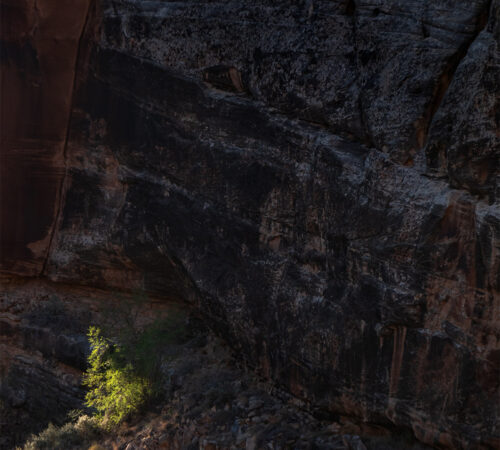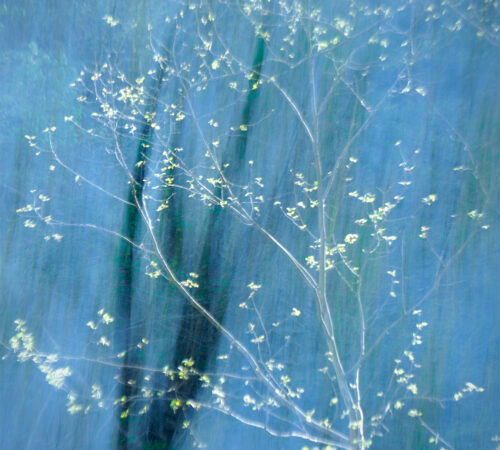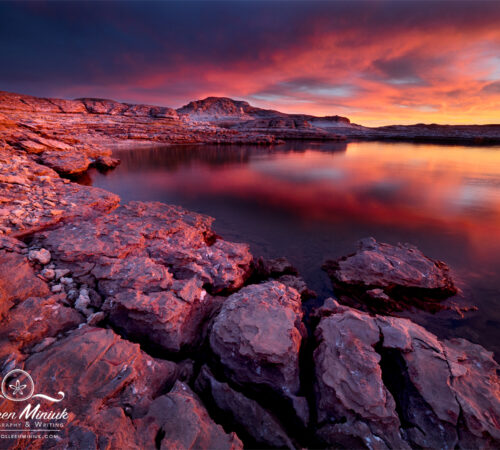Going on a Sandimental Journey
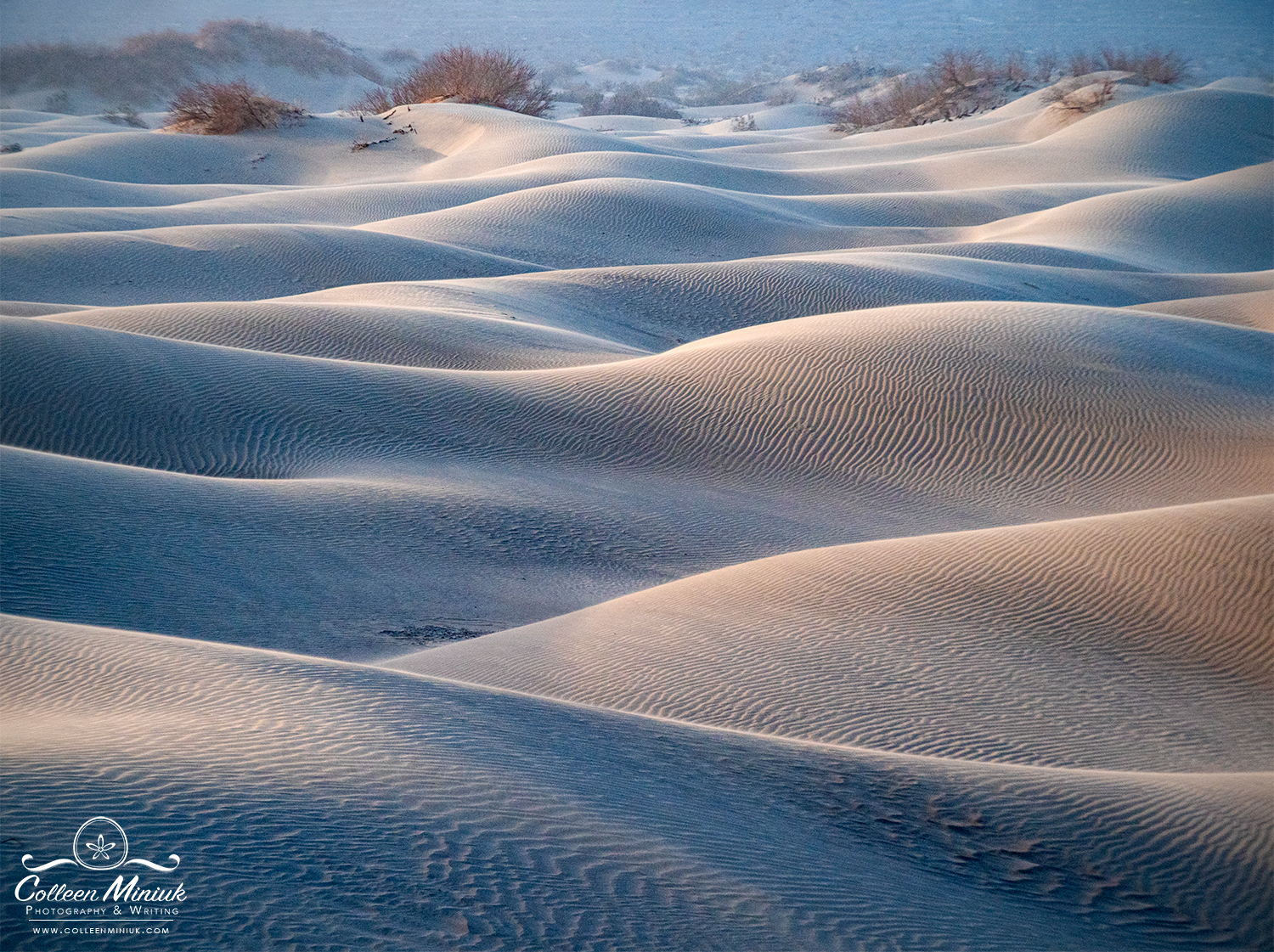
Dear Bubbles:
Any trouble keeping sand from ruining expensive equipment?
Paul
Dear Paul:
On the third afternoon of my recent Death Valley Sheography workshop this past January, a massive windstorm rolled through the basin. Clouds of sand swirled in every direction, obscuring views of the distant mountain ranges surrounding the valley near Stovepipe Wells and, at times, even the sky overhead. By nightfall, blowing sand had started to accumulate in the corners of our hotel room doors—leading to many silly jokes about how we wouldn’t need to leave the parking lot to photograph if we had sand dunes building right in front of windows.
The weather forecast suggested that the 35-40 mph gusts would calm overnight. I had already planned to bring my group out to the Mesquite Flats Sand Dunes in Death Valley for sunrise the next morning, but I couldn’t believe my luck! The windstorm would clear the popular dunes of the many footprints it usually has. We’d get clean, untrampled compositions. A rare gift, indeed!
So we rose well before sunrise. The group huddled around the tailgate of my truck to eat a quick breakfast snack or two (which, for those who have been on my workshops, is affectionately called “The O’Dark-Thirty Café”). In sharp contrast to the night before, the air was still—so still, in fact, we noticed it. We drove away from the parking lot downright giddy.
As the saying goes, “The trouble with trouble is it starts off as fun.” By the time we had reached our designated parking pull-off—a mere ten minutes later—the winds had already picked up. Not enough for us to change our plans, but enough to know we’d need to protect our gear. We started our mile or so hike into the dunes in the dark.
My giddiness quickly turned into groans. The winds seemed to intensify with every step we took. By the time we reached a fine location for our photographic pursuits, the footprints we had just imprinted disappeared within minutes. The sun rose as an eerie glowing orange orb diffused by a dust cloud. The landscape looked like this: IMG_0082 (This is my first attempt to include a video on this blog. Fingers crossed, it works…)
The experience was awesome in the truest sense of the word. And our group made remarkable and unique images from it (including the one above). We’re still talking about it today, and I’m sure it’ll come up in memories in the years ahead.
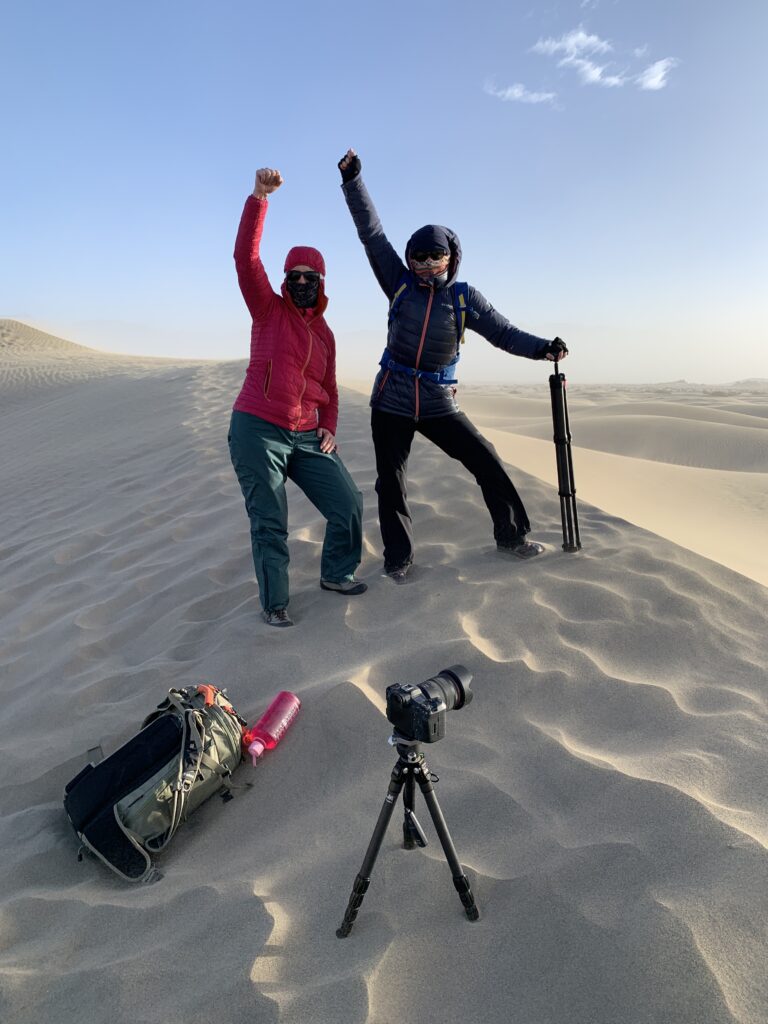
It’s moments like being in that sandstorm that remind me why I became an outdoor photographer. It wasn’t to press the shutter button over and over again. Or worry incessantly about what ISO I should use. I’m an outdoor photographer because it helps me discover new things about myself and the natural world around me; to feel the power of nature in her raw and uninhibited forms; to feel like a part of something bigger than myself, even when it makes me feel smaller than a single grain of sand; to feel wild and free and unbridled like the howling wind; to feel utterly alive.
To be sure, not going is never an option for me. I only check the weather to determine what gear I need to bring for me and my camera, not to determine whether I go outside. Unless it presents a major safety hazard or other risks involving significant bodily harm, the answer to whether I do something in inclement weather is always “yes.” Besides, thirty-five mile-per-hour gusts are nothing when you’ve stood (er, been blown over…) in 85+ mph winds in a blizzard in Acadia National Park (just to see what it feels like…).
I’ll admit, to put yourself in “it,” to become more than a passive bystander in the natural world, especially in the middle of unwelcoming conditions, sometimes leads to a little—or a lot of—shall we say, discomfort. Sometimes it’s not always fun in the moment. I could argue getting pelted in the eyes by a salvo of sand could very well be the definition of miserable. In hindsight, though, after it’s all said and done, and you’re back in the parking lot, you look back and think, “WHOA! THAT WAS SO COOL!” As I say to my workshop participants (jokingly), “We must suffer for our art.”
This is called “type 2” fun. Type 1 fun is having a good time and knowing it in the moment. Like when you’re eating warm cherry pie with vanilla ice cream. Or snuggling with puppies. Or dancing joyfully among bubbles. Type 1 fun is where pleasant memories happen. Type 2 fun is where impressive stories, starting with opening lines like “From the depths of hell” and “No shit this really happened…,” originate. The funny thing about type 2 fun is that, over time, you somehow manage to forget that piercing sensation in your eyeballs enough to be willing to do it all again.
(“Why yes, yes I would LOVE to go out and photograph in the middle of a sandstorm again.”)
As all good girl and boy scouts know, the key to reducing misery and increasing fun is to be prepared. So here’s how I protect my gear—and myself (also expensive to replace…)—from blowing sand:
- Bring weather-sealed gear to the party. My Olympus OMD EM1 Mark II camera, which is renowned for its weather-sealability (if Shakespeare can make up words, so can I), has been submerged in fresh water for five seconds, and it survived. While I don’t know that it’d hold up in sandstorm 24 hours a day, 7 days a week, 365 days a year, I don’t worry one bit about exposing it to extreme conditions for short periods of time such as a few hours of intermittent winds (or rain). When purchasing a camera, look for how well it’ll stand up to a variety of environments.
- Don’t change lenses in the middle of a windstorm. Start off by attaching your broadest range zoom to give you the most flexibility (e.g., a 24-105mm, 100-400mm). Then work within those constraints. Or bring a second camera body with a different focal length attached. If you absolutely must change lenses, turn your back to the wind, curl over your lens to protect it, and switch it out as fast as possible.
- Avoid adding filters to your lens in the field. ‘Tis true that glass forms from the melting and transformation of sand. Even in Death Valley, where there’s likely enough heat to make that happen, you aren’t in the field to make glass! You’re in the field to wander and photograph! So consider keeping a UV filter or polarizer on the front of your lens to protect your more expensive glass from scratching. (Be sure to add these to your lens before getting into the sand so you don’t get sand stuck in between your filter and lens.) Instead of using fancy glass or acrylic filters, though, use a high-dynamic-range imaging (HDR) or blending approach. Graduated neutral density filters could flop around in the wind in their holder (or while you’re hand holding them), causing vibration. You don’t need to add more vibration; you’ll already have plenty of that going on with the wind whipping against your camera and tripod (so use a fast ISO and shutter speed and turn on your vibration-reduction/image-stabilization feature, even if you’re shooting from a tripod).
- Protect your camera as if it were raining. Wrap your camera and lens in an Optech Rainsleeve or a ThinkTank Hydrophobia or even a simple plastic bag. Make sure all loose ends are tied down securely so the fabric doesn’t flap incessantly, obstruct your lens’ view, or worse yet, the whole contraption flies away. Leave the umbrella behind unless you wish to reenact scenes from Mary Poppins (which could be exciting?!? Would that be type 1 or 2 fun?!?)
- Cover your nose and mouth: Unless you like eating sand (is that the true meaning of a “sandwich?”), wear a buff, bandana, or other face mask—they aren’t just for pandemics, kids.
- Protect yourself by wearing waterproof rain gear. A rain jacket and pants provide excellent protection from the wind. Cinch down the ties/velco around your hands, feet, head, and neck so the sand doesn’t creep in. You might end up looking like the Stay Puft Marshmallow Man, but who cares. You aren’t competing in the Mr. America pageant out there. (Yes, Mr. America is really a thing, but it really should involve more costumes…). Now, we put on our sunglasses in the Mesquite Flat Sand Dunes to protect our eyes. Friends of mine out there at the same time used ski googles–such a great idea! Those have now been added to my camera bag for future windstorms. Except…
- Ditch the camera bag. It turns out, sand’s favorite place to congregate is at the bottom of confined spaces. I have so many sand dunes at the bottom of my dry bags after all my river rafting/stand-up paddleboarding trips, I’m thinking about establishing a new national park. If you bring your bag with you, plan on dumping sand out of your bag for days and months after (which works great if you want to start your own national park…) Since you aren’t likely to change lenses or filters, stash an extra battery and memory card in your pocket, and leave it behind. If you absolutely must bring it, cover it with oversized plastic bag, trash, bag, or even the build-in rain cover to
- Get your camera cleaned afterwards. Is sand kind to equipment? No. Will it ruin equipment? Maybe, maybe not. Sand crunching in your lenses isn’t going to help you make better images, so best to clean your camera, lenses, and tripod yourself or find a professional outfit to help immediately after your outing. After all, you need to be ready for your next sandimental journey…
Be well, be wild,
Bubbles
Have a question about photography, art, and/or the creative life? Need some advice? Looking for inspiration? Send your question to Dear Bubbles at colleen@colleenminiuk.com to be possibly featured in a future column post. (If you’d prefer a different display name than your real first name, please include your preferred nickname in your note.


